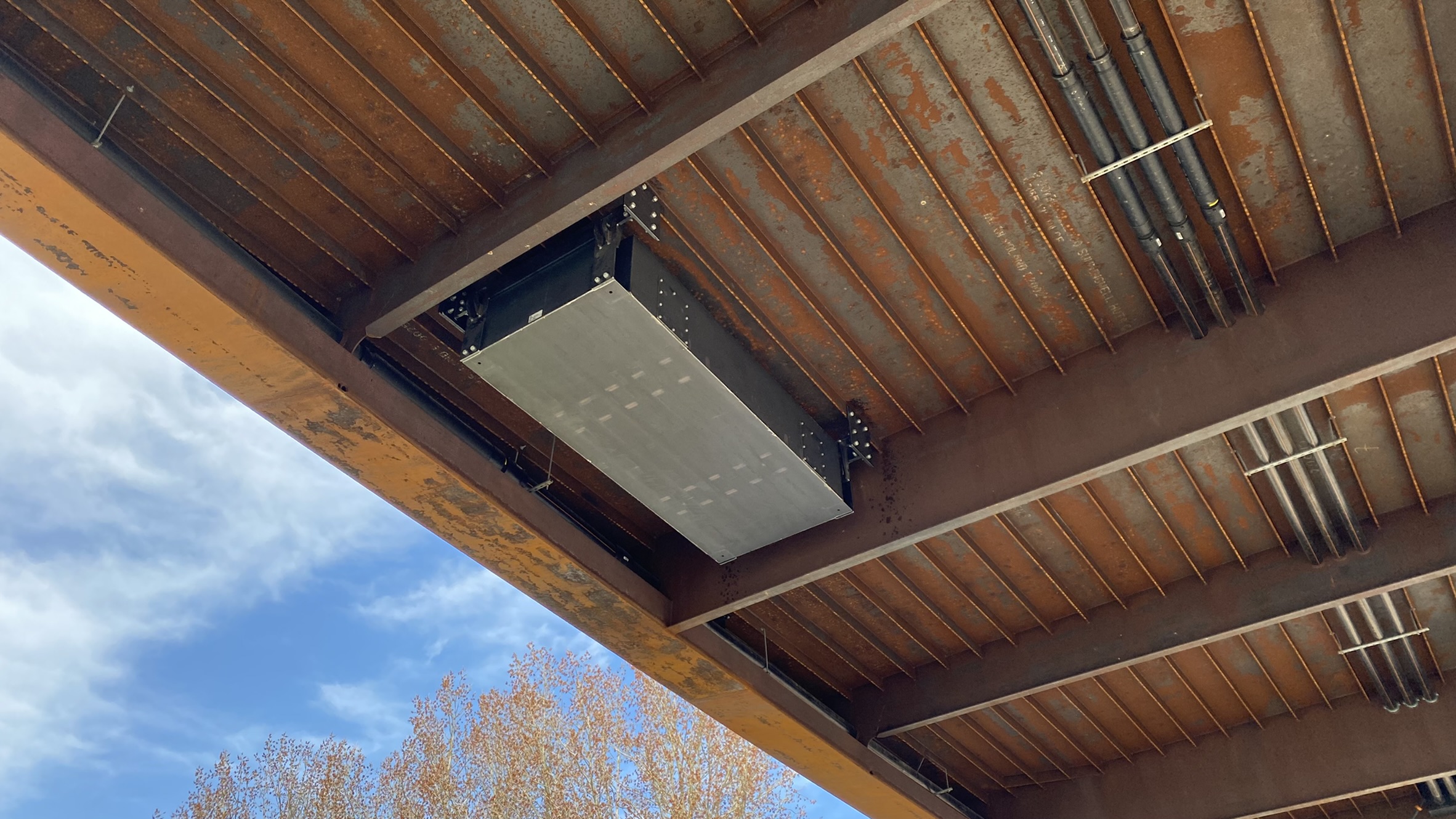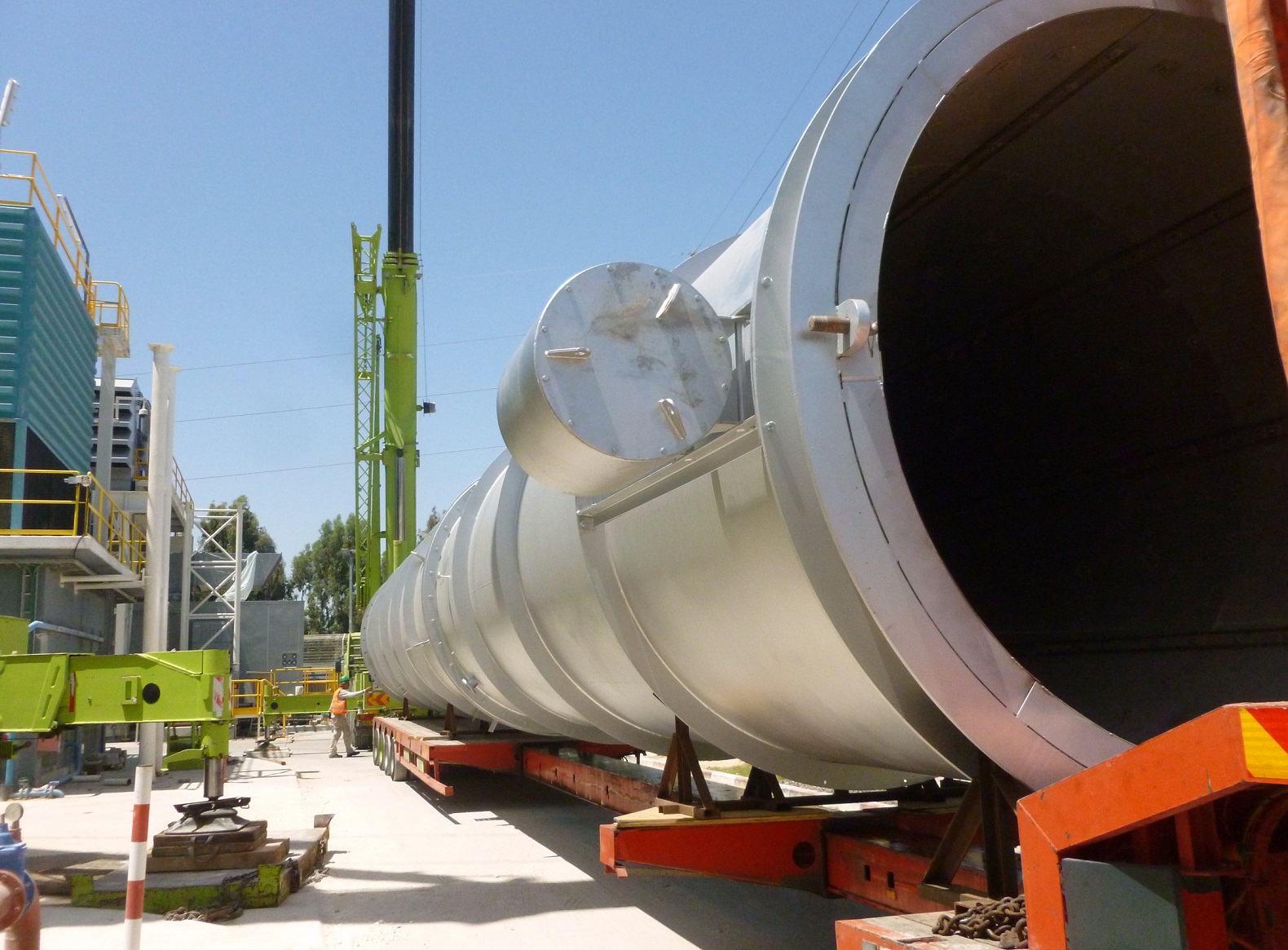Tuned Mass Damper
Many structures – from bridges and high-rise buildings to industrial machinery and offshore platforms – can experience unwanted vibrations. These vibrations may be caused by wind, waves, machinery, or even people walking. While small vibrations are often harmless, excessive or sustained oscillations can cause discomfort or even structural damage.
A Tuned Mass Damper (TMD) is a mechanical device designed to counteract these vibrations. At Flow Engineering, we design and supply TMDs tailored to your specific application. Our TMDs help create more stable, comfortable, and safe structures – whether you are preventing a future problem or solving an existing one.
Working Principle of the Tuned Mass Damper
Our TMDs use a carefully tuned vibrating mass, mounted so it can resonate in the same direction as the vibration. This mass is tuned to the natural frequency of the vibration, typically using a spring system or a pendulum arrangement.
When the structure vibrates, the moving mass responds in the opposite phase to the load. This mass is coupled to a damping element, which converts the vibration’s energy into heat. The result is a significant reduction in vibration amplitude, improving comfort, performance, and safety.
Key factors we consider when designing a TMD include:
- The vibration frequency to be targeted
- The moving mass of the structure, also called the generalized mass
- The direction of movement (single-axis, dual-axis, or vertical)
- The available space for installation
Flow Engineering’s TMDs are engineered to match your structure’s unique characteristics, ensuring effective vibration control and long-term performance.
Measurement of a TMD on a Bridge
Flow Engineering carried out a demonstration of the effectiveness of a Tuned Mass Damper system on the Jan Linzelviaduct. Measurements were taken before and after installation of the damper, clearly showing the difference. After installation, the bridge’s vibration sensitivity was dramatically reduced, demonstrating how a well-designed TMD can transform structural performance.

Your one-stop company for vibration control
Our expertise in custom and standardized damper systems, combined with our proficiency in civil and industrial vibration engineering, makes us the go-to solution for vibration prevention. Many of our clients trust us to help them pursue their ambitions, knowing they have access to the ultimate one-stop company for vibration control.
These Tuned Mass Dampers are designed completely by Flow Engineering. We offer both custom and standardized damper systems, allowing us to provide the ideal solution for any project.
Why Choose Flow Engineering for Your Tuned Mass Damper?
At Flow Engineering, we are more than TMD manufacturers — we are vibration engineers at heart. Our expertise is built on decades of specialized knowledge, transformed into our own advanced, proprietary TMD design software. This combination allows us to handle everything from straightforward cases to the most challenging, unconventional vibration problems.
-
Complex vibration directions? If your structure moves at a skewed angle but your TMD can only operate vertically, we have the engineering solutions to bridge that gap.
-
Multiple TMDs in one location? We can design multiple differently tuned dampers to operate together, each tuned with the other’s influence in mind for maximum effectiveness.
-
Limited structural data? Many engineers consider this the norm. Even with typical uncertainties, our design methods ensure your TMD meets its performance targets — for example, by accounting for possible deviations in the structure’s resonance frequency and designing the TMD to perform within that range.
All scenarios and possibilities have been anticipated, tested, and streamlined into Flow Engineering’s design procedures and calculation methods. The result is not just a functioning TMD, but one backed by some of the most advanced vibration engineering expertise in the world.
When you work with us, you are not just buying a damper — you are getting a complete vibration control solution, engineered with precision and proven both in calculations and in the field.
Design considerations
The following is a simplified model of a single Tuned Mass Damper, showing how it performs under different conditions.
For a single mode of vibration, a structure equipped with a TMD can be represented as in the figure below:
-
k = spring constant
-
c = damping constant
-
m = mass
-
Subscript 1 refers to the structure, subscript 2 to the TMD
A well-designed TMD can significantly reduce the structural response, as illustrated in the following graph.
The effects of varying several design parameters are given below.
Effect of Mass Ratio
One key parameter is the mass ratio μ — the ratio of the damper’s mass to the vibrating structure’s mass. Increasing μ reduces the structure’s displacement under vibration.
The normalized structural displacement amplitude can be calculated using the formula from J.P. Den Hartog’s Mechanical Vibrations. This value represents how much more the structure moves compared to a static load of equivalent force.
A normalized displacement of 20 means the structure moves 20 times more than it would under the same load applied statically. Without a TMD, a structure can reach a normalized displacement amplitude of up to 250.
Looking for a tower/TMD engineering company? Contact us
Damper Frequency
In many projects, the exact eigenfrequencies of a structure are not known with high accuracy at the time the TMDs must be designed. In such cases, it is practical to define a frequency range within which the target eigenmode is certain to occur. By designing the TMD to cover this entire range, it can be produced and installed without first having to measure the exact structural frequencies.
When a structure has multiple eigenfrequencies close to one another, a wide-range TMD can be used to add damping to several modes at once. This can significantly reduce the number of TMDs required, lowering the total cost of the vibration control system.
TMD Damping Ratio
Mistuning caused by internal damping changes over time can noticeably increase vibration amplitudes. To prevent performance loss, we recommend replacing the internal dampers at set intervals — typically every 15 to 25 years, depending on the type of damper used.
Contact us for more information
Do you want Flow Engineering to design a Tuned Mass Damper for your project, or would you like to receive more information about this mechanical device and structure vibration control before you buy it? Then please reach out to us by calling +31 (0)180 – 63 11 60.

























